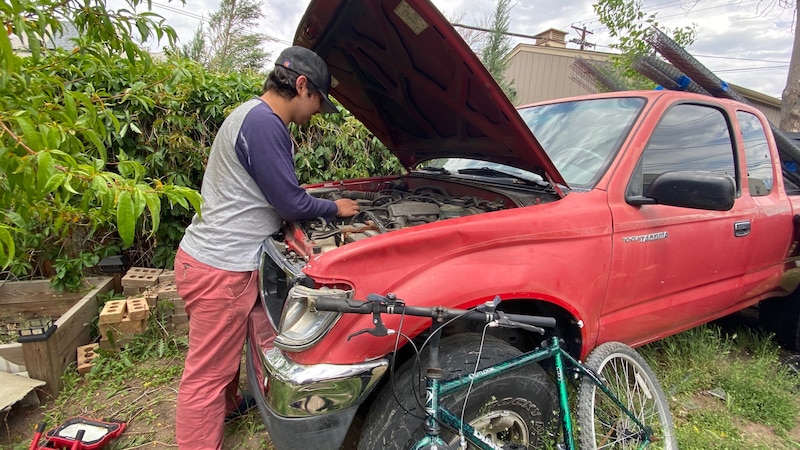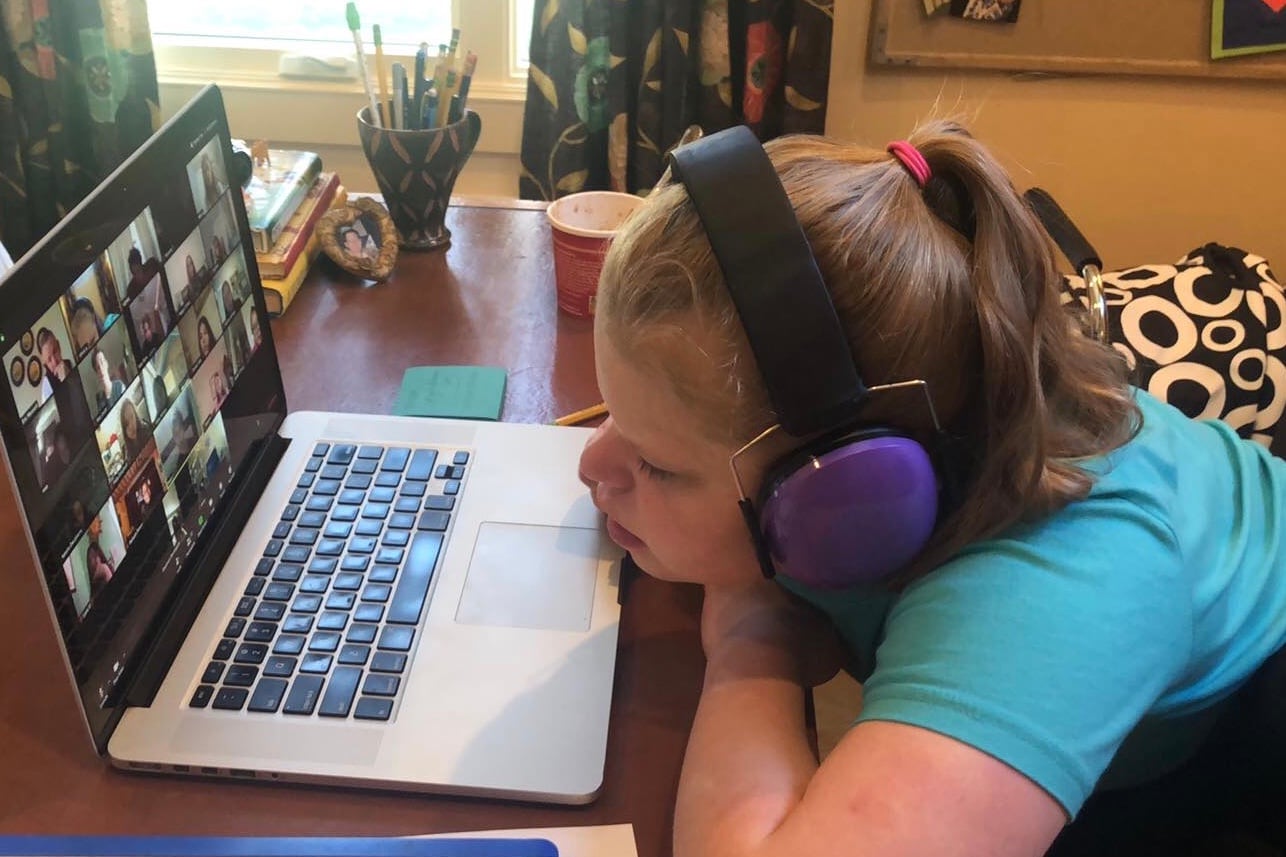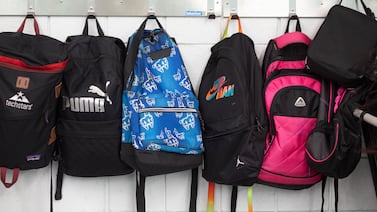Little changed for Nick Skeers when learning went remote in March. Born with a connective tissue disorder that makes his heart and lungs fragile, the 10-year-old fourth-grader has always done school at home. Now instead of his teacher sitting in his kitchen, she’s on the computer.
For another 10-year-old boy, 20 miles away, everything changed. Millie Segura’s son has autism and attention deficit hyperactivity disorder. In school, he’s in a fourth-grade classroom learning alongside peers without disabilities. At home with his parents and a seemingly endless scroll of video instructions and links, Segura said her son struggles to focus.
“He pouts, he cries, he says, ‘No, this is boring! I’m not going to do it!’” said Segura, who didn’t want to use her son’s name in this story. “If we don’t have a teacher right in front of our children, making sure they are engaging, as parents, there is very little we can do.”
The two boys provide a snapshot of the disparate experiences Colorado students with disabilities have had with remote learning. Some students with special needs have done just fine — or even thrived as the technology they use to learn, once unfamiliar to most educators, has become indispensable.
But for far more students with disabilities, remote learning has been a challenge.
School districts must still provide students with special education services even though buildings are closed to in-person learning. In many cases, however, schools aren’t able to provide all the services guaranteed in students’ individualized learning programs, or IEPs. And not all students have equal access to remote learning. Districts are already discussing whether they’ll have to make up lost services over the summer or next year.
As summer school goes virtual, and many Denver metro area districts plan for a mix of in-person and remote learning in the fall, parents of students with special needs worry.
They worry that without the structure of school, the expertise of special educators, and the vital services provided by school therapists, the escalating behaviors they’re seeing will continue. They worry that their child used to be able to add double-digit numbers, but now cannot. They worry both about protecting their family from the virus, and preserving their mental health.
“I want for the school year to be over so my son can have a break,” said Segura, whose son suffers from seizures that worsen under stress. “He’s very stressed out, and so are we.”
We asked parents of students with special needs in the metro area how their children have been served during remote learning. Here are some of their stories.
‘The learning will come next year’
Seventeen-year-old Daniel spends much of his day tinkering with an old Subaru behind his house. Auto mechanics was his favorite class in school. Now that his classes are online, he checks in but is done after five minutes, said his mother, Cristina Gomez.
“He does the five minutes he has to be meeting with the teacher,” Gomez said. “After that, he thinks he’s finished. I say, ‘You need to still be working. Your assignments.’ It just doesn’t happen. … I haven’t seen that much motivation.”
Daniel had a brain tumor when he was a baby. Now a teenager, he has epilepsy, dyslexia, and attention deficit hyperactivity disorder. Reading and writing are difficult for him, his mother said, and he can get frustrated trying to follow multistep directions.
Gomez has always been a fierce advocate for her son to get the services he needs in school. But with the coronavirus, she said her main goal is making sure her family stays healthy.
“My expectations for learning are very low right now,” Gomez said. “I think if they were higher, it would be hard to meet them … The learning will come next year.”
‘There’s no social stigma’
A visual disability meant Sarah Young’s eighth-grade daughter learned early on to use technology. In school, the girl’s classroom was outfitted with a large computer monitor so she could “blow up” her lessons. Even so, most of the work her teachers assigned was on paper. Young would have to ask them to print a single, enlarged math problem per page.
All of it made Young’s daughter self-conscious. But now that school has gone remote, Young said the teenager can use her giant computer screen at home without worrying.
“Everything is, in a lot of ways, more accessible to her,” said Young, who asked that her daughter’s name not be used in this story. “There’s no social stigma with using her screen.”
Algebra, with its lines and graphs, has been particularly tricky for Young’s daughter, who has trouble with visual processing. But the teacher’s recorded lessons have been a game changer, Young said. Her daughter can pause or rewind the video if she doesn’t understand.
“If she gets a 30-minute lecture in class, at the end of the 30 minutes, she maybe got 10% of it,” Young said. “Then she’s lost for the rest of the week. Now she gets maybe 80% of it.”
Recently, her teacher made a mistake in one of her demonstrations. The teacher asked if any students caught it. Young’s daughter was able to say yes.
“She was so proud,” Young said.

‘I am not a teacher’
With just a couple weeks of school to go before summer break, Xiomara Blanco said she had finally found a working routine with her two children, including 11-year-old Julio, who has Down syndrome. But at first, Blanco, whose primary language is Spanish, said that helping her kids while trying to understand their schoolwork in English was almost too much.
On top of that, Julio has been biting his nails and having trouble sleeping, and it’s caused some downstairs neighbors in her apartment building to complain. Blanco often goes to bed at 1 a.m. and wakes up at 3 a.m. worrying about Julio’s health and checking whether he’s asleep.
“With all of these worries, I suddenly started to feel sick,” Blanco said.
So much so that Blanco started teaching her first grader how to dial 911 in case of an emergency, but she said she stopped and realized she just needed to adjust her expectations.
“I had to understand I was going to keep putting in my best effort, but I am not a teacher,” Blanco said. “I am not a speech language therapist.”
Now Blanco has shifted her focus to wellness. Her first grade daughter’s physical education teacher began sending her class daily workout videos, and Blanco has taken the opportunity to make it a family activity. It has benefitted Julio the most, she said.
“It’s really helped his anxiety,” Blanco said.
One day, Julio found his sister’s pink headband and used it to dress up like the physical education teacher. Blanco recorded a video and sent it to the school.
‘He’s been allowed to check out’
For Jodie Buczak, the constant communication from her kids’ schools is overwhelming. Especially stressful are the messages about her seventh grade son Chris, who has autism: He didn’t turn in an assignment. He typed an inappropriate comment in his class chat.
“It’s like, ‘Can you get him to do social studies?’” Buczak said. “I’m like, ‘He can’t stand that class.’” She wants her son to participate, but “I don’t want everything to become a fight.”
Because of his autism, Chris’ thinking is very compartmentalized, Buczak said: At school, he does schoolwork. At home, he does not. It’s been hard to get him to learn remotely.
“I feel like I’m fighting brain chemistry with Chris,” said Buczak, who has two other children as well. “How do I grow Chris’ attention when he didn’t have a ton of it before?”
So she’s doing the best she can. Rather than hover over him and risk a confrontation, she slyly listens “to make sure I can hear the sounds of his classroom.” She makes sure Chris goes out for a daily walk and goes to bed at the same time as always.
But to her knowledge, he’s not completing his weekly classwork.
“He’s been allowed to check out,” Buczek said.
She said she asked Chris’ teachers whether she should hold him back a year. But Buczek said she was told that would do more harm than good, an answer she accepted.
“I don’t like to fight with the school because it’s like, ‘Where am I going to send him?’”
‘We have to survive this the best we can’
The first time Olivia Posthumus logged on to Zoom and saw her friends and teachers — and met their dogs and cats — she was elated. “It’s a good thing you could put it on mute because she’d just laugh,” said her mother Jeanne Posthumus. “But that wore off after about a week.”
Now Olivia, who has Down syndrome and another rare genetic condition, struggles to keep up her stamina as she’s “bombarded with all this screen time,” her mother said. In addition to schoolwork, the eighth grader does virtual sessions with a special education teacher, a paraprofessional, a speech therapist, and a school psychologist.
In school, Olivia is invigorated by her classmates’ energy. At home, she tires easily.
“She works hard in 20-minute increments and then needs a rest,” said her mother. It all depends on the day. “Some days, she does 75% of what we’ve got planned for her. Other days, we’re lucky to get 25%. You hope at the end of the week, it all evens out.”
Although Olivia has been well supported by her teachers, remote learning is far from ideal, her mother said. There have been funny moments, like when Olivia told Alexa to play the “Hamilton” soundtrack while her brother was on a class call. And there have been worrisome ones; whereas Olivia could add and subtract double-digit numbers before, that skill has now slipped.
While most students are likely to be behind next year, such setbacks can be particularly challenging for students with disabilities, whose skills are often hard won.
“This is stressful on everyone, but when you have a child with disabilities, it takes the stress level way up,” Jeanne Posthumus said. “It’s like we have to survive this the best we can.”
Reporter Yesenia Robles contributed to this story.









